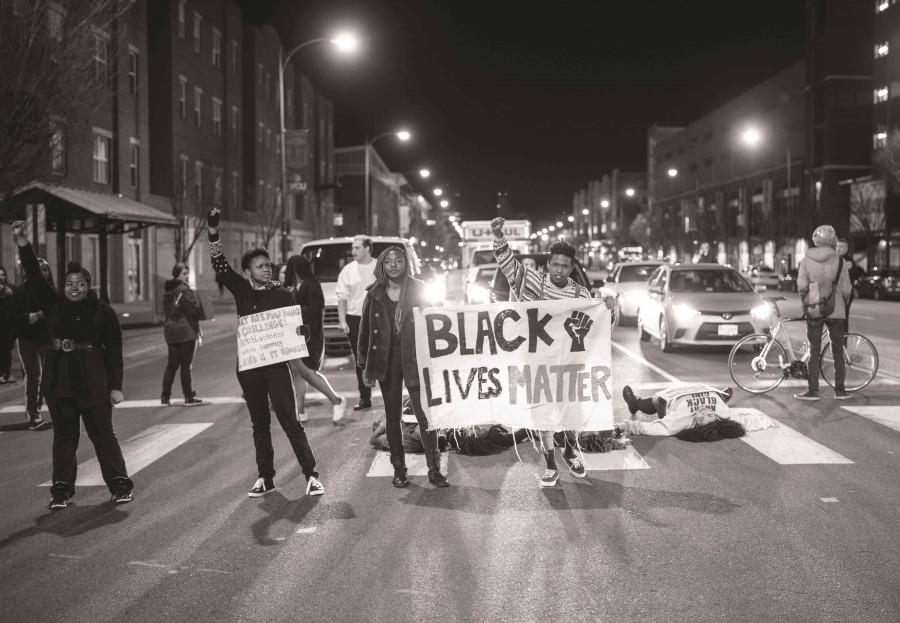Students respond to racial inequality on campus
Photo courtesy of Creative Commons.
College students protest unfair treatment of black students after a video was released showing fraternity members performing a racist chant.
April 29, 2015
A number of universities across the country have recently been dealing with racial tension and inequality, reminding Americans that these issues still exist, even within an environment perceived as safe and accepting.
According to a March 9 Washington Post article, a video was reportedly first posted by an African American activist group called Unheard at the University of Oklahoma. The video consisted of a racist chant by members of the fraternity Sigma Alpha Epsilon (SAE).
The University of Oklahoma president David Boren immediately responded to the video by shutting down the SAE chapter and suspending the two students who led the racist chant.
“This behavior is reprehensible and contrary to all of our values,” Boren said in a March 9 statement via Twitter.
Another incident occurred at the University of Virginia, when 20-year-old junior Martese Johnson was arrested by officers from the Virginia Department of Alcohol Beverage Control (ABC), after he was denied entry to the Trinity Irish Pub. Johnson received a head wound through the incident, sparking a rally and a march to protest the police’s treatment of him.
“I was disgusted, disappointed and sorrowful for Johnson,” Black Student Alliance (BSA) president and senior Malcolm Udeozor said. “I am upset that the officers involved in his beating are facing no charges or any legal problems of any sort.”
According to Udeozor, the BSA held meetings in which members discussed the recent racial issues and how these events can be prevented in the future.
The BSA is not the only group of CHS students expressing their opinions about the recent racial issues at different universities. Social media sites like Twitter have played an important part in allowing students to discuss their different opinions.
“I love Twitter and that it can be used to raise awareness,” junior Ogbo Ngwu said. “I take it as my responsibility to connect the black community, the conversation of racism, and the non-black community among my peers.”
According to Ngwu, many young people, even here at CHS, have little knowledge about these current events. Ngwu believes it is essential for young people to recognize and understand racism in order for racism to be eliminated.
The solution of peaceful protests is evident throughout the majority of the universities experiencing these racial issues. At Duke University, president Richard Brodhead and provost Sally Kornbluth immediately reacted to a student hanging a noose on a tree by sending an e-mail to all students announcing that a public forum would be held on the steps of the Duke Chapel to discuss the incident.
While many universities and people view discussing racism out in the open as the best solution, others believe that discussing racism outside the classroom should not be the only solution.
“It’s not enough to only talk about it,” BSA sponsor and math teacher Chris Jackson said. “Students should be educated in the classroom about racism, discrimination and how it impacts certain people.”


